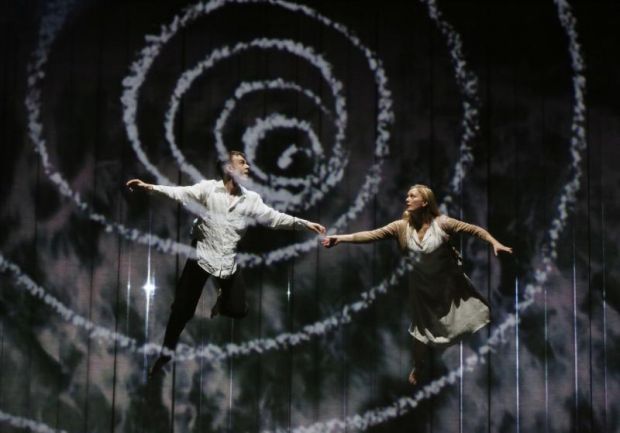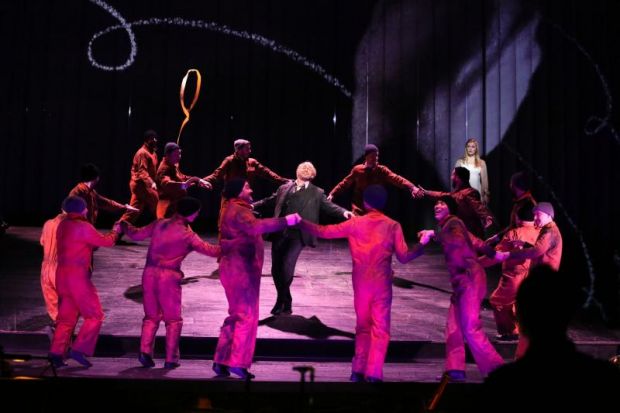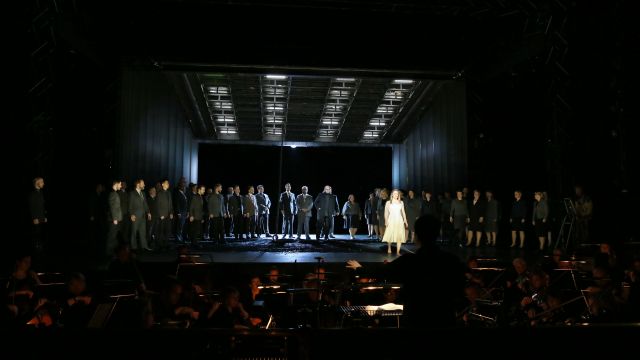Die Zauberflöte (The Magic Flute)
Every now and again a new opera version is performed that changes your views about the text, music and how is to be performed. Simon McBurney’s new version of Die Zauberflöte is just such a production.
I have been involved in theatre for over fifty years and have never seen a production of this Mozart classic that is so well thought out and entertaining. It is truly opera on steroids.
Borrowing from slapstick, melodrama, shadow puppetry, puppetry, foley, projection, and the latest production techniques, the Metropolitan Opera have produced a stellar production that I’m sure Mozart himself would approve!
This version of Die Zauberflöte is the brainchild of British director Simon MC Burney, co-founder and artistic director of Complicité, one of Britain’s most adventurous theatre companies. McBurney is also an actor in major films—from The Theory of Everything to Harry Potter and the Deathly Hallows, Part 1, and television’s Rev (BBC) and The Borgias (Showtime).

French conductor Nathalie Stutzmann leads an impeccable orchestra lifted into full view who also interact with the actors. The effect of ‘lifting the orchestra’ lifts the ambience of the sound and allows the audience to see the musicians creating it, view making the opera a truly immersive experience.
There’s an historical accumulation of images associated with this opera (elements of Mozart’s interest in Freemasonry, the potent presence of the number three, etc). These are all still present but sometimes in different forms.
Among McBurney’s and Stutzmann’s collaborators for this production are Michael Levine, who designed the sets of much-acclaimed Met productions directed by Robert Carsen, Anthony Minghella, and Francois Girard. Others in the creative team are the similarly luminary Nicky Gillibrand (costumes), Jean Kalman (lighting), and Finn Ross (projections).
This production features a Foley sound artist on stage (Ruth Sullivan), creating effects in a structure that is reminiscent of a country kitchen.
Blake Habermann, the visual/video artist and owner of the chalkboard hand, creates the majority of projections via a video setup at the edge of the stage. Habermann’s actions are projected onto scrims to create the backdrop for the action in real time. These projections also comment on the action as it unfolds.
The central element of the set is a platform that can hover, become a mini stage, creating a visual metaphor for humanity in turmoil.
The cast of Die Zauberflöte are every bit as stellar as the settings in which they perform-
Silver-voiced soprano Erin Morley, having delighted audiences in both lyric and coloratura parts, from Gilda to Olympia, Sophie, and the title role of Matthew Aucoin’s Eurydice in last year’s Met premiere, gives an earnest performance and brings gravitas to the role.
Opposite her as Tamino, in his first Met appearance in Mozart, is tenor Lawrence Brownlee, who starred with the company most recently in Rossini’s La Donna del Lago and is recognized worldwide as one of today’s greatest exponents of bel canto repertoire. His voice is crystal clear with a ringing tone that matches Morley’s voice to perfection.
Coloratura soprano Kathryn Lewek, the most frequent Queen of the Night in Met history (44 performances to date) gives us a refreshingly different Queen. Gone is the glamour. What is left is a decaying woman looking for vengeance. Her two big arias are the best I’ve heard and are the high points of the production.

Thomas Oliemans gives us a Papageno that could have stepped off the Broadway stage bringing to the beloved bird-man his instinct for physical comedy and modern-day references. His antics with his metal ladder and banter with the audience are memorable as is his duet with soprano Ashley Emerson’s Papagena (with Jumbotron-type accompaniment from Haberman) is a comedy highlight.
Stephen Milling, a giant of a man, with a giant of a voice is a wonderfully kind and generous Sarastro, The scene with Morley is surprisingly tender—a lesson from a father to a daughter that is full of love and understanding. He towers over Brownlee and commands a board of high priests in grey suits.
Brenton Ryan, in the minor role of Monastatos, is threatening and whimpering at the same time, and brings an oily and energetic physicality and a marvellous tenor voice.
The cast is completed by birds, businessmen, three aged children, and the Queen of the Night’s three ladies whose amorous exploits with Papageno in the first act are a delight.
Simon MC Burney’s Die Zauberflöte may not please the traditionalists. That does not matter, it sets a benchmark for future opera adapters and had this reviewer excited for his next venture!
Barry Hill OAM
Images: Donald Cooper
Click here to find your closest cinema.
Subscribe to our E-Newsletter, buy our latest print edition or find a Performing Arts book at Book Nook.

